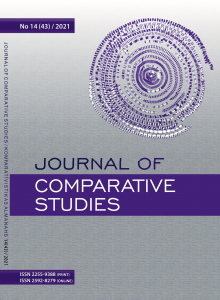The Soviet Image of the USA in Latvian Satirical Journalism of the 1960s: Textual and Visual Code
Keywords:
Soviet ideology, propaganda, satire, journalism, caricature, feuilletonAbstract
Almost immediately after the end of the Second World War (WW II)
and the declaration of the Iron Curtain policy, the Cold War broke
out between the socialist and capitalist countries: the so-called
opposition between the Eastern and Western bloc. The most acute
confrontation between the USSR and the USA was manifested in
such areas as the arms race, space exploration, struggle to expand
spheres of influence. In 1962, during the Cuban Missile Crisis, the
world was on the brink of nuclear war.
After the occupation in 1940, Latvia was part of the Soviet
system, and therefore was exposed to the Soviet ideology and propa-
ganda. Most of the inhabitants of Latvia (like of the whole USSR)
had practically no opportunity either to visit the USA or to obtain
reliable information. Periodicals of the USSR imposed on the Soviet
reader their image of America and the Western world in general; a
huge role in creating this image was assigned to satirical publications.
The article reveals the principles of representation of the USA
image in the magazine ìDadzisî [The Thistle] and ìDad ̨a kalend‚rsî
[The Thistle Almanac] using imagological and cultural-historical
approaches. The research focuses on the textual and visual represen-
tations of the phenomenon under study both in feuilletons and carica-
tures created by Latvian and foreign authors and published in the
1960s Latvian satire.
The study reveals that the static image of the USA consisting
of a certain ìsetî of stereotypes was implanted in the Latvian society
of the above-mentioned period and later.

